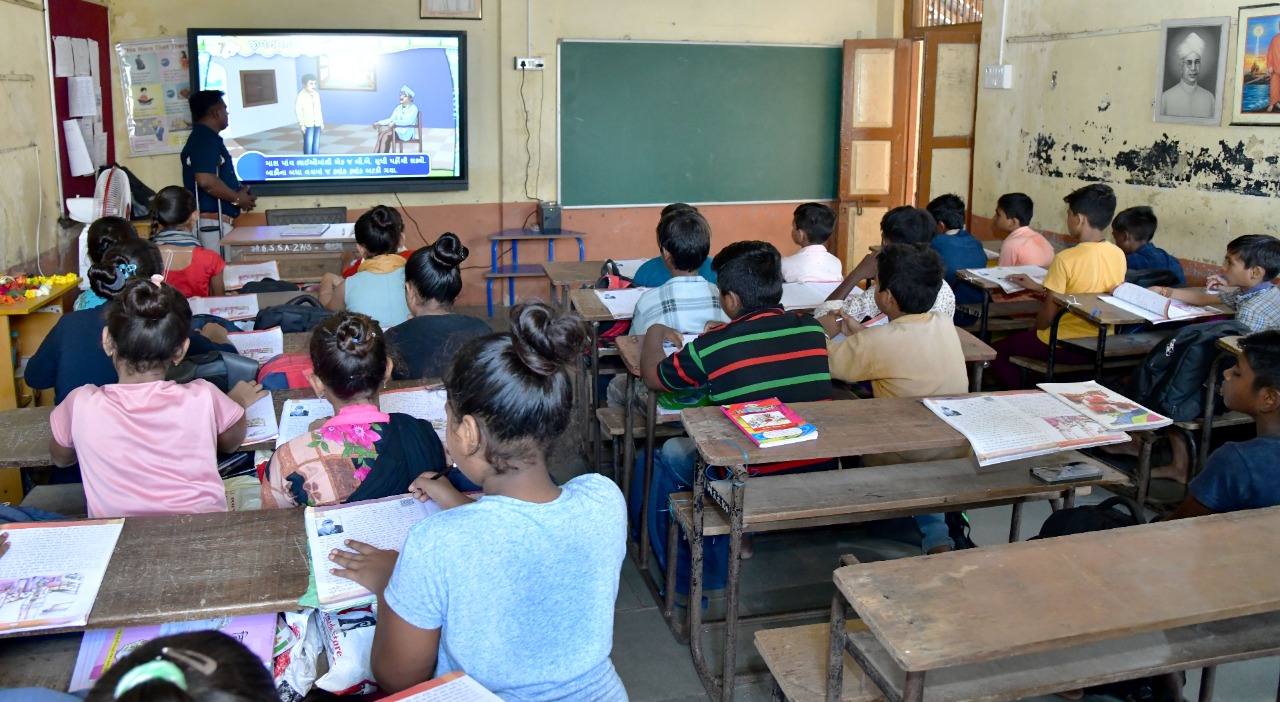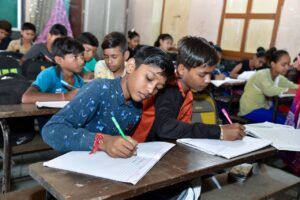The initiative of a unique campaign by the Vadodara district administration was supported by 75 students who left the private school to join a smart-class-equipped government school. This unique initiative was taken by District Collector AB Gor. The goal of this initiative is to use technology to ensure that pupils in remote locations also receive a high-quality education. The district’s 225 schools have been chosen for this and 73 schools are included in the initial round of smart classes.
A dashboard is provided along with the educational module which uses audio-visual media for its courses of various standards. The attractive aspect of these schools is There are animated math and science exercises as well as poems in Gujarati and Hindi with songs. That’s attracting students to learn with interest.
The primary school in Lilod village in Karjan taluka, with a population of 900, has a total enrollment of 304 kids. Students from nearby villages attend this elementary school because the teachers are so committed to the cause of education. After the smart classes were introduced, 13 students returned to public school. A private school in the nearby village is now about to shut down due to the implementation of the smart class.
“I often check on my daughter academic progress”, said farmer Jaydev Patnawadia, who transferred his child from a private school to this government elementary school. It is noticed that compared to studying in a private school, his daughter prepares notes better in a government school and also obtains good marks in the examinations.
Assistant teacher Mahendra Mehra confirmed that the students of classes 6 to 8 have shown better performance in the unit test.
District primary education officer Archana Chaudhari said “We conducted a survey including 5853 students from Gyankunj’s 140 present schools. These sixth-grade kids had a bad annual exam performance because they did not learn in smart classes during the 2019–20 academic years. 982 students, or 17%, had a grade below 40%. A total of 4007 pupils received grades ranging from 40 to 79 percent. Only 750 pupils received a grade of greater than 80%.”
These pupils are still the same ones that were in the Gyankunj class in grade 8 in 2021–2022, and their performance in the ensuing annual exam has improved. This year, 5853 students signed up in total. The percentage of pupils who received a 40 percent grade in the study has decreased to 12 percent after attending Gyankunj. The proportion of pupils scoring in the 40 to 80 percent range has increased to 69%. In the meantime, the percentage of students scoring more than 80% on the yearly exam rose by 6% to 18%. As a result, more students are receiving high marks overall.






